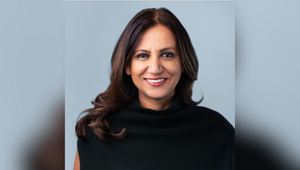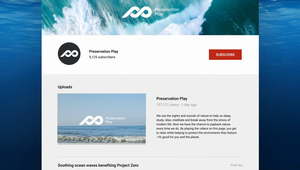
The Future of Finance Is Inclusive

Financial services have historically catered to the privileged few, creating a system of exclusion that persists today. But a transformation is underway—previously underrepresented groups are becoming major economic forces and innovative fintech solutions are leading the way to a new financial landscape for everyone.
The economy is changing hands
The traditional financial system is increasingly misaligned with where economic power actually lies. Women are projected to control 75% of discretionary spending by 2028, yet only 37% feel confident in their financial decisions. In emerging markets, where 65% of global economic growth is expected over the next 10 years, traditional financial infrastructure remains scarce and inaccessible to the masses.
These groups are not small, niche audiences. They are the future of the financial system. This gap between economic influence and financial inclusion isn’t just a social issue—it’s a massive business opportunity.
Fintechs are bridging the gap
Fintechs are reshaping finance by doing what traditional banks can't: moving fast, focusing on underserved customers, and embracing new technology. Their nimble nature lets them test and iterate quickly, while their user-first mindset helps them solve real unmet needs in the market. By leveraging AI, modern payment systems, and digital currencies, they're building innovative solutions that work for previously overlooked consumers.
Successful financial inclusion rests on three key approaches.
1. Designing for real lives, not idea scenarios
The best innovations come from understanding people's real lives, contexts and needs—not from assuming they should fit into traditional banking models.
M-Pesa, a mobile money platform in East Africa that allows deposits, transfers, and microloans via SMS, has introduced a way for farmers to receive payments without making costly trips to physical banks. By designing around these realities, they’ve brought over 50 million people into the banking system for the first time.
Meanwhile, Tala took a fresh approach to credit scoring by using smartphone data instead of traditional credit scores. They've helped 10 million people access financial services, with women—who often struggle with traditional credit systems—making up 58% of their customers.
2. Prioritising education and transparency
Financial barriers go beyond technology—they're deeply psychological and cultural. Most women want clearer financial services but feel talked down to by banks, leading to a feeling of distrust. And in emerging markets, only 7% of people turn to banks or online tools to learn about money management.
But some companies are changing this. Cleo, an AI chatbot in the US, speaks to gen z and Millennials in their own language, helping them understand and control their finances through personalised insights.
As Kuwait’s first digital bank, Weyay was designed to address the unique financial needs of the country’s young generation. Recognising that many young Kuwaitis are entering a vastly different economic landscape than previous generations, Weyay serves as their entry point to banking— building strong money habits and enhancing financial literacy via an intuitive app experience.
3. Creating user experiences that are simple and intuitive
When financial products are complex, people hesitate to use or trust them. That's why fintechs focus on making their services simple and easy to understand through thoughtful product design and intuitive user experiences.
Take JP Morgan's work with UAE-based Al Fardan Exchange—they built a remittance service specifically for low-income foreign workers. Beyond enabling faster money transfers, they made the service truly accessible with features like voice commands to help users who speak different languages or have varying literacy levels.
These examples reveal a simple truth: financial inclusion happens when solutions adapt to people's lives, not the other way around. When you build products that truly fit people's needs and circumstances, you create both loyal customers and meaningful impact.
The winning strategy isn't just about technology—it's about deeply understanding how people live and what they need. When we do this right, we can break down banking barriers while building successful businesses.
The business case for inclusion
The numbers tell a compelling story. The fintech market is booming, expected to reach $1.1 trillion by 2030. Companies focusing on financial inclusion are outperforming traditional banks across the board: they're growing revenue at 15% annually (compared to banks' 6%), earning up to 46% higher customer satisfaction (NPS) scores,, and seeing 25% higher CLV when tailoring products and services for women. Governments are catching on too—from the EU's PSD2 to India's inclusion programs, new regulations are breaking down old monopolies on financial data, letting fintechs build more accessible solutions.
Creating a financial system for everyone
These regulatory shifts signal a broader transformation in finance. Focusing on inclusion isn't just ethical—it's becoming essential for business success. Fintechs are proving this by outperforming traditional banks through solutions that truly understand and serve overlooked communities. The message to established banks is clear: adapt to these underserved markets or risk being left behind.
Success in the future will go to those who can build products that combine cutting edge technology with empathetic and accessible design—creating solutions that empower everyone to participate in the financial system.















